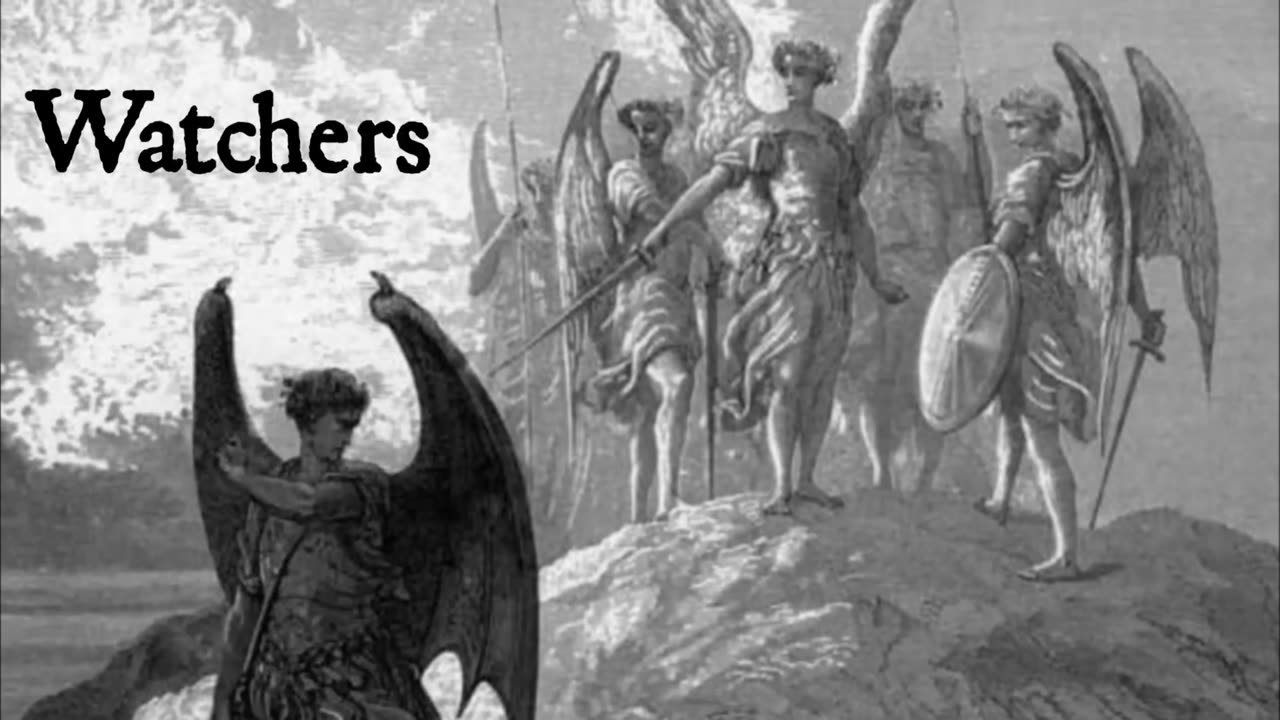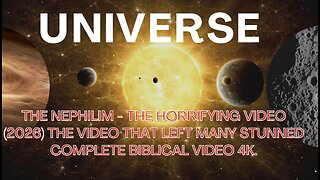Premium Only Content

🔴 MIND-BLOWING Anunnaki & Nephilim 🔴
MIND-BLOWING Anunnaki & Nephilim
Despite their ancient origins, the Anunnaki have been subject to many
contemporary reinterpretations, notably in various fringe theories and works of pseudo-history. These often involve extraterrestrial influences and other speculative concepts, but these ideas are not supported by mainstream scholarship or historical evidence. But more on that later as well. The mythology of the Anunnaki is complex and spans several ancient cultures, with the earliest accounts coming from the Sumerians. Their stories, like many ancient mythologies, attempt to explain the origin of the world, the nature of gods and humanity, and the laws that govern existence.
In Sumerian mythology, the Anunnaki were initially viewed as celestial deities associated with various aspects of life and nature. However, the term Anunnaki gradually came to be associated more specifically with chthonic (underworld)
deities. In Mesopotamian mythology, the term "Anunnaki" was used to refer to deities in general, but it was often specifically associated with the deities of the underworld, the realm of the dead. However, this does not necessarily imply a negative or punitive association. In many ancient cultures, the world was perceived as a multitiered structure, often divided into heavens, earth, and underworld. Gods and goddesses were assigned to different realms based on their roles and functions.
The Anunnaki are depicted in various myths as judges in the underworld, ruling over the fate of the dead. For instance, the goddess Ereshkigal, the queen of the underworld, and Nergal, the god of death and plague, were both considered part of the Anunnaki. The reason why many of the Anunnaki were associated with the underworld is likely related to the Sumerians' beliefs about life, death, and the afterlife. The underworld, known as Kur or Irkalla, was considered a dreary, dark place where the
spirits of the dead existed in a shadowy version of their earthly life, sustained by libations and offerings from the living.
The Nephilim, as depicted in biblical traditions, are the offspring of the sons of gods (or fallen angels) and are described as giants.
In general, the Anunnaki and the fallen angels, who give birth to giants, or Nephilim, are separate entities from distinct cultural and religious contexts: Mesopotamian mythology and Hebrew religion, respectively.
Both undergo the wrath of God and try to teach humans knowledge.
Both the Anunnaki and the fallen angels are seen as powerful
beings with the ability to influence humanity.
The Book of Enoch, an ancient Jewish religious work, ascribes the origins of sin and corruption on earth to a group of angels known as the "Watchers," who fell from grace by mating with human women and teaching humanity forbidden knowledge. But rather than the Anunnaki, This story shares more elements with the myth of the apkallu, seven wise
men or demigods in Mesopotamian mythology who were created by the god Enki (a member of the Anunnaki) to establish culture and give civilization to mankind.
Zecharia Sitchin refers to various Sumerian cuneiform texts to support his idea of the planet Nibiru. One key text he often cites is the "Enuma Elish," the Babylonian creation epic. Sitchin suggests that references to a celestial body called Marduk in this epic actually refer to Nibiru.
In the Enuma Elish, Marduk is portrayed as a "wandering planet" that collides with and splits Tiamat, a primordial goddess associated with the sea, in two. Sitchin interprets Tiamat as a pre-existing planet located between Mars and Jupiter. He suggests that one half of Tiamat became the asteroid belt, and the other half was struck by another of Marduk's moons and was pushed into a new orbit, becoming Earth.
However, Sitchin's interpretation of the Enuma Elish and his association of Marduk with Nibiru is heavily criticized by scholars. Mainstream interpretation reads the Enuma Elish as mythology and not a literal astronomical account. Furthermore, Sitchin's identification of Nibiru with Marduk is not supported by any extant cuneiform text. In fact, the term "Nibiru" in the extant texts is used to denote a point of crossing, and sometimes is associated with certain celestial bodies depending on their position in the sky, but it's never described as the home of the Anunnaki, nor as an additional planet in our solar system with an unusual orbit, as
Sitchin claims.
-
 32:21
32:21
Prophecy of Enoch, Fallen Angles, God, Creation Mysteries And More!
9 days agoTHE NEPHILIM - The horrifying Video (2026) The Video that Left Many Stunned
433 -
 1:09:16
1:09:16
Man in America
17 hours agomRNA 2.0: This Frightening Tech Can Target Your BRAIN Using Biological Post Codes
54.3K17 -
 1:28:31
1:28:31
The Charlie Kirk Show
6 hours agoTHOUGHTCRIME Ep. 100 — Turning Point Halftime? Potatoes and Katie Porter? Hasan the Dog Shocker?
110K53 -
 6:33:19
6:33:19
SpartakusLIVE
8 hours agoNEW Update, NEW Meta || Zombies Mode is BACK - Smokes NURFED
66.4K5 -
 13:10
13:10
Robbi On The Record
6 hours ago $8.00 earnedThe War on Christians | China’s Surveillance & Nigeria’s Killing Fields
44.6K31 -
 1:24:49
1:24:49
Flyover Conservatives
1 day agoYour Home Just Became a Healing Room — The Truth About Red Light & Med Bed - Jonathan Otto | FOC Show
44.2K7 -
 2:11:35
2:11:35
Mally_Mouse
4 days ago🎮 Throwback Thursday! Let's Play: Kingdom Hearts 1 pt. 2
33.2K2 -
 3:00:37
3:00:37
Barry Cunningham
9 hours agoBREAKING NEWS: LETITIA JAMES INDICTED FOR MORTGAGE FRAUD!!! LIBTARD TEARS ARE FLOWING!
65K39 -
 1:17:42
1:17:42
Glenn Greenwald
9 hours agoUS/Venezuela Escalations: Revisiting Key Developments and the Push for Regime Change | SYSTEM UPDATE SPECIAL
119K156 -
 3:13:40
3:13:40
ProvenTactics
6 hours agoFPS Shooter Games
19.8K4